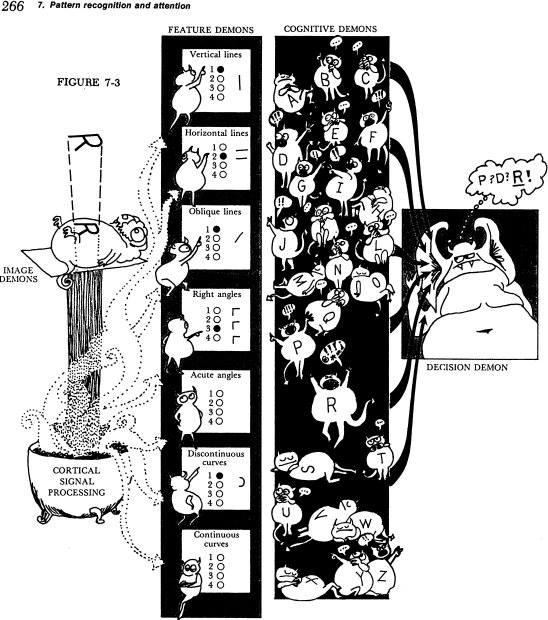Oliver Selfridge was an early pioneer of artificial intelligence, and in 1959 wrote a classic paper outlining a system by which simple units, each carrying out a specialised function, could be connected together to perform complex, cognitive tasks.
This ‘pandemonium architecture‘ inspired research in neural networks, which in turn led to modern machine learning about which we hear so much these days.
The Pandemonium model is best known through some fantastically characteristic illustrations by Leanne Hinton in Lindsey & Norman’s 1977 introductory psychology textbook ‘Human Information Processing’. Here’s one:

One internet citizen described the illustrations as ‘an attempt to explain the complexities of Parallel Distributed Processing through the language of a child’s nightmare.‘, but I feel more affection for them – the demons look friendly to me.
Selfridge wrote four children’s books (I don’t know who illustrated them), had three wives and helped break the story of National Security Agency spying as part of the Echelon programme.
Although the Pandemonium model is widely known, and often associated with these illustrations, the name of the illustrator, Leanne Hinton, is often omitted.
I tried to track her down to hear her side of the story, and although I identified Leanne Hinton, Professor Emerita of Linguistics, as the likely illustrator, she didn’t reply to my email so I couldn’t confirm this was her, nor get permission to publish the cartoons on this blog.
[if you know more, or want me to correct anything in this post, please get in touch]
One more image:










Leave a Comment